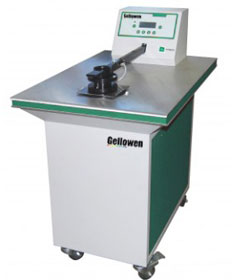
NewsInformation Center
What is ASTM d737-04 air permeability test?
2023/12/05
ASTM D737-04 is a standard test method for evaluating the air permeability of fabrics, paper, plastic films, and other materials. air permeability test is a measure of a material's ability to pass water vapor or gases under certain conditions and is usually expressed in terms of the flow of gas through a unit of area per unit of time, or the rate of water vapor transmission.
The full name of the ASTM D737-04 test method is "Standard Test Method for Air Permeability of Textile Fabrics" and is also applicable to other nonwoven materials. In the test, a sample is mounted in a test apparatus so that a gas, usually air, is applied to the sample and the velocity and pressure drop of the gas across the sample are measured.
The test method requires the use of a circular (or square) sample, the flow of gas through the sample by applying it at a constant pressure or velocity, and the measurement of the velocity of the gas through the sample or the gas transmission rate by the fluorescent dye method or the differential pressure method. Depending on the test conditions and instrumentation requirements specified in the standard, the results of the test can be used in the quality control of materials, performance evaluation and product development process.
The air permeability test is important in many applications such as apparel, protective materials, medical supplies, filters, and construction materials. By accurately evaluating a material's air permeability, it can help manufacturers select the right material, optimize product design, and ensure that the product's performance meets specific needs and standard requirements. Some common applications are listed below:
1. apparel and textiles: air permeability is critical to indoor and outdoor temperature regulation and human comfort. air permeability test can help manufacturers select fabrics for different seasons and environments to ensure their comfort and durability.
2. medical supplies: air permeability is critical for products such as medical fabrics, surgical gowns, and face masks. Testing ensures the filtration performance and bacterial containment of these products and reduces the risk of cross-infection.
3. Building materials: Breathability has a significant impact on air quality and energy efficiency inside buildings. Testing can assess the insulation, thermal performance and water vapor permeability of building materials to optimize building design and ensure safe, comfortable and sustainable buildings.
4. Filters: Air permeability has a significant impact on the filtration efficiency and flow rate of filters. Testing can help filter manufacturers to select the right materials for different application scenarios and ensure that the product meets standard requirements.
In conclusion, air permeability testing plays an important role in many industries. It is important to select the appropriate test methods, instruments and equipment according to the standards and test requirements of the particular industry, and to conduct testing and analysis under the guidance of experienced professionals.
Previous: How often should a button pull test be done?
N e x t : Standard Test Method for Air Permeability of Textile Fabrics




